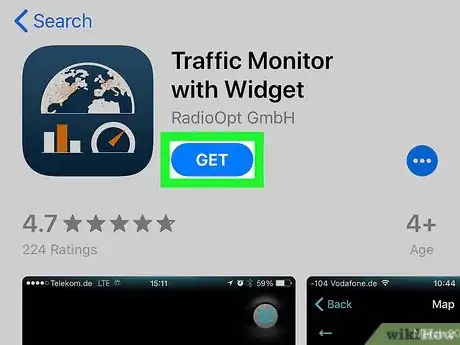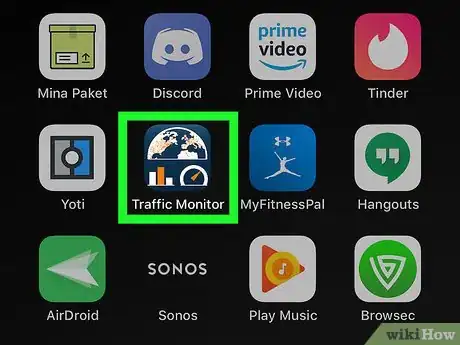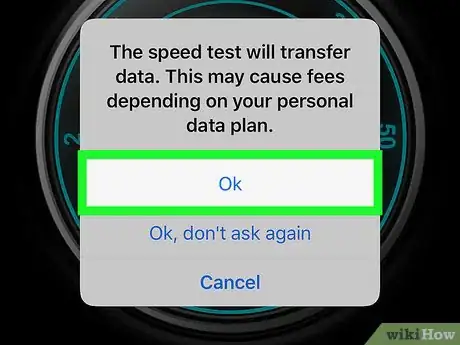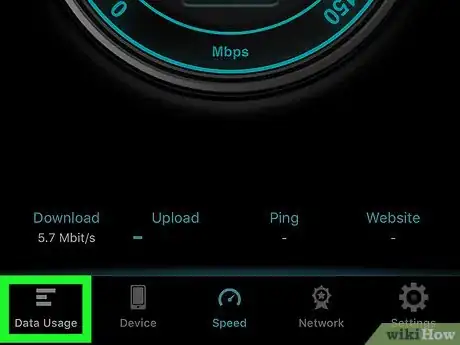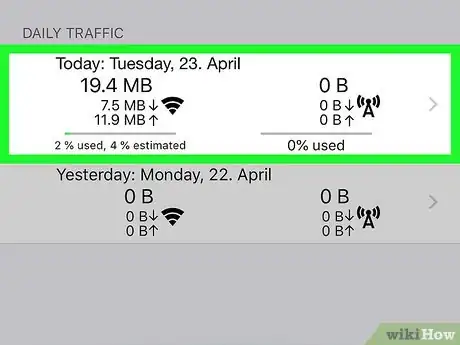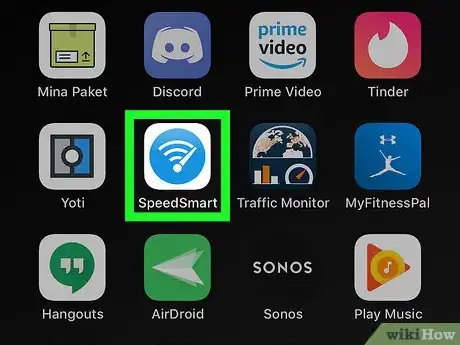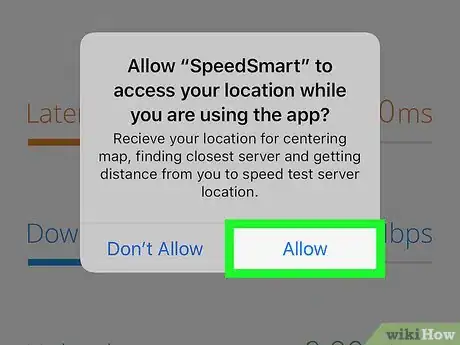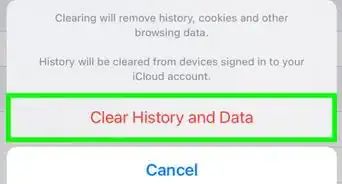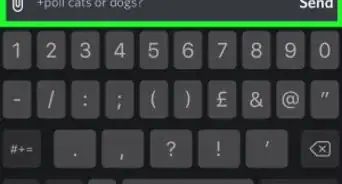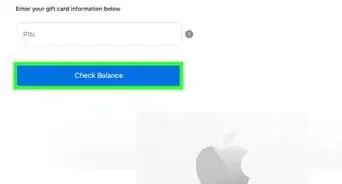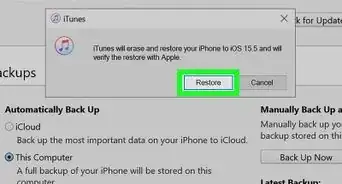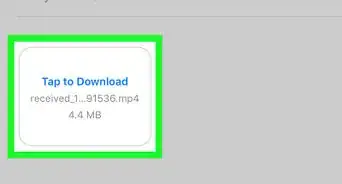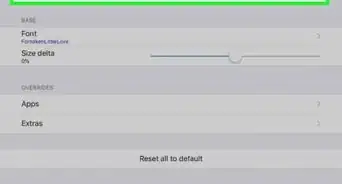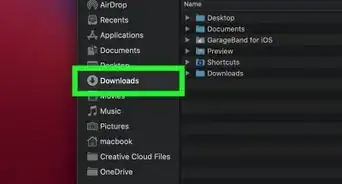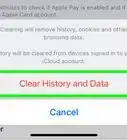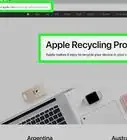This article was co-authored by Luigi Oppido and by wikiHow staff writer, Nicole Levine, MFA. Luigi Oppido is the Owner and Operator of Pleasure Point Computers in Santa Cruz, California. Luigi has over 25 years of experience in general computer repair, data recovery, virus removal, and upgrades. He is also the host of the Computer Man Show! broadcasted on KSQD covering central California for over two years.
The wikiHow Tech Team also followed the article's instructions and verified that they work.
This article has been viewed 41,545 times.
This wikiHow teaches you how to track your internet download and upload speeds over a period of time on your iPhone or iPad. Although there are no ways to do this that are built-in to your iPhone or iPad, you can install a variety of free third-party apps, including popular options like including Traffic Monitor and SpeedSmart.
Things You Should Know
- Download Traffic Monitor, a third-party app that tracks data usage over time.
- You can also try SpeedSmart, another third-party data usage app. It has ping and jitter tests.
Steps
Using Traffic Monitor
-
1Download the Traffic Monitor app to your iPhone or iPad. This is a third-party app you can download from the App Store. The app is listed as "Traffic Monitor with Widget" and now includes a helpful widget that works on iOS 14 and later.
- Alternatively, you can try a different data monitoring app. There's a variety of free and paid options on the App Store with minor differences in user interfaces.
- If you need help downloading the app, make sure to check out this article for some help.
-
2Open Traffic Monitor on your iPhone or iPad. The Traffic Monitor icon looks like a blue square with half a globe, bar charts, and a speed meter in it. You can find it on your home screen or in your app library after your download is finished.Advertisement
-
3Review the terms and tap Accept. You'll only have to do this the first time you launch the app.
- You will only have to do this once when you first open the app.
-
4Tap the speed meter on your screen. This will begin an instant internet speed test on your iPhone or iPad.
- You will see a message that says the speed test will transfer data, which may incur fees depending on your mobile data plan. If you're okay with this, tap OK, or OK, don't ask again. Otherwise, tap Cancel.
- If you're asked to use your current location, just tap any of the options you prefer. It won't affect your speed test.
-
5Tap Ok in the pop-up. This allows Traffic Monitor to find other devices on your network to check local network speeds. Once you select this, your current speeds will appear on the page.
-
6Tap the Data Usage tab. It's the three horizontal bars at the bottom-left corner. This displays your monthly and daily traffic information.
-
7Tap the time period you want to view. You can open your daily and monthly internet traffic data logs here. Tapping an option will open the time log for the selected period and display your speeds over the selected time period.
- You can view the Current Month and Last Month under "MONTHLY TRAFFIC," and Today and Yesterday under "DAILY TRAFFIC."
- You can view your speed averages for every day in a month or speed logs for every few minutes in a day.
Using SpeedSmart
-
1Download the Speed Test SpeedSmart app to your iPhone or iPad. This is a free app you can download from the App Store.
-
2Open SpeedSmart on your iPhone or iPad. The SpeedSmart app looks like a Wi-Fi icon in a blue odometer on a white background. You can find it on your home screen or in your app library after your download is finished.
-
3Tap Allow in the pop-up. When you first open SpeedSmart, you'll see a pop-up asking you to allow the app access to your location. This will help the test find the closest server to you.
-
4Tap the blue Start Speedtest button. It's at the center of the screen. It will start testing your current internet speed.
- The test results show your current download and upload speeds, as well as the results of ping and jitter tests.
-
5Tap bar chart icon to view historical data. It's the icon of three vertical lines at the bottom of the screen—the icon is the second from the left. Each time you test your speed, the results will be added to this screen and stored on the server.[1] The "Date" column shows the date and time the test was performed.
- Tap a date/time to view more detailed information about the test.
- The data collected is stored on a remote server, not your iPhone or iPad.
Expert Q&A
-
QuestionWhat should I do if the internet on my device is slow?
 Luigi OppidoLuigi Oppido is the Owner and Operator of Pleasure Point Computers in Santa Cruz, California. Luigi has over 25 years of experience in general computer repair, data recovery, virus removal, and upgrades. He is also the host of the Computer Man Show! broadcasted on KSQD covering central California for over two years.
Luigi OppidoLuigi Oppido is the Owner and Operator of Pleasure Point Computers in Santa Cruz, California. Luigi has over 25 years of experience in general computer repair, data recovery, virus removal, and upgrades. He is also the host of the Computer Man Show! broadcasted on KSQD covering central California for over two years.
Computer & Tech Specialist First try checking the internet speed on another device. If the internet speed is fine on other devices, try restarting your device that's running slow and switching the Wi-Fi off and on again.
First try checking the internet speed on another device. If the internet speed is fine on other devices, try restarting your device that's running slow and switching the Wi-Fi off and on again.
About This Article
1. Download Traffic Monitor from the App Store.
2. Open Traffic Monitor.
3. Tap Accept.
4. Tap the speed meter.
5. Tap the Data Usage tab.
6. Select a time period.
7. View your speed logs.
